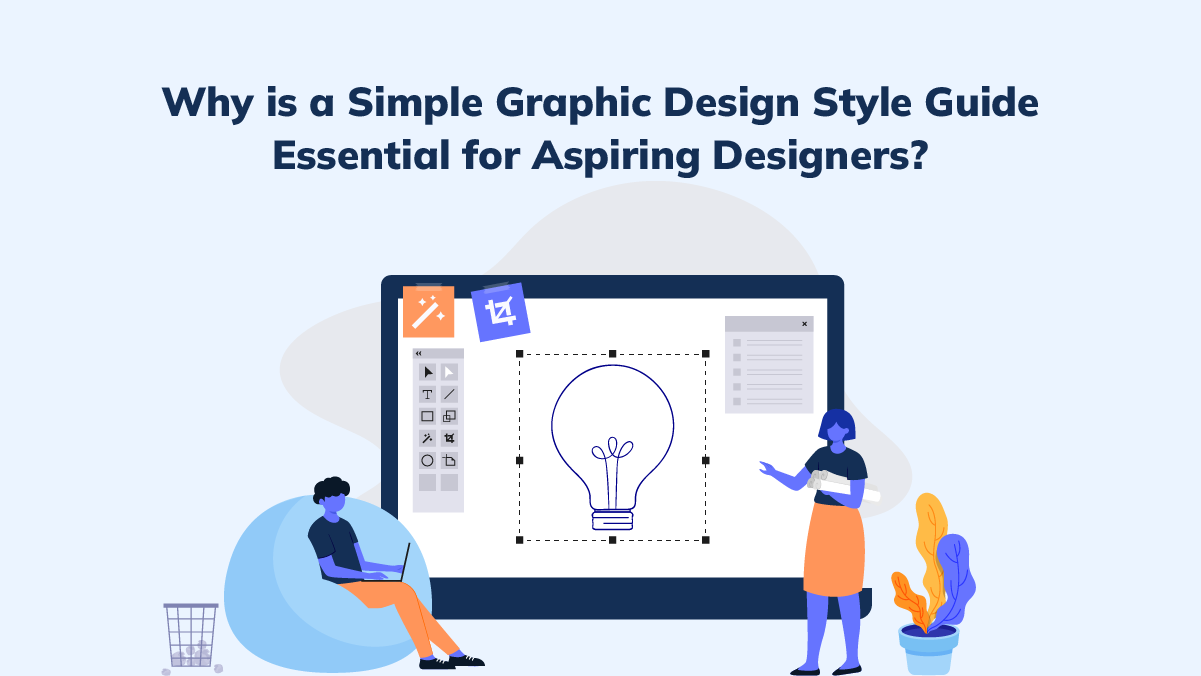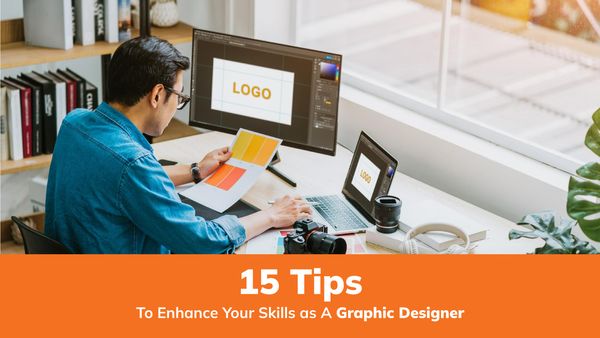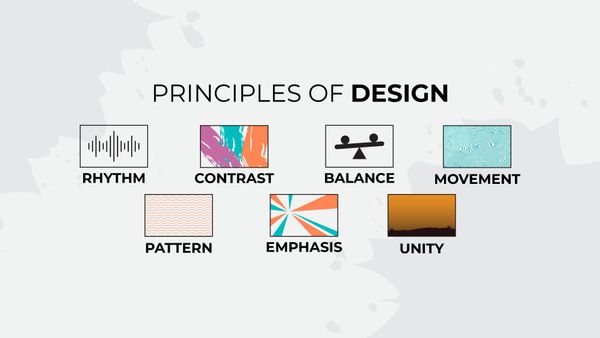Why is a Graphic Design Style Guide is Essential for Aspiring Designers?
In the fast-paced world of visual communication, consistency is key. Whether you're designing for a brand, a website, or a marketing campaign, maintaining a cohesive and professional look is essential. This is where graphic design style guides come into play. They are the secret sauce behind successful visual communication strategies, ensuring that every design element aligns with the brand's identity and goals. In this blog, we'll unravel the secrets of creating and implementing successful graphic design style guides.
What is a graphic design style guide?
A graphic design style guide is a comprehensive document that outlines the visual elements and guidelines that define a brand or project's identity. It serves as a roadmap for designers, marketers, and anyone involved in creating visual content to ensure that all materials maintain a consistent and unified appearance. These guides are not only crucial for maintaining a professional and coherent brand image but also for streamlining the design process and saving time in the long run.
Why are style guides essential?
Consistency: Consistency is crucial in branding and visual communication. A well-crafted style guide ensures that all design materials, from logos to advertisements, adhere to the same visual standards. This consistency builds trust and recognition among your audience.
Efficiency: Style guides streamline the design process by providing a clear set of rules and assets. Designers don't need to start from scratch each time they create something new. This efficiency can save both time and resources.
Clarity: Style guides help prevent misunderstandings and misinterpretations of brand guidelines. By providing clear instructions, anyone involved in design projects can understand and adhere to the brand's visual identity.
Scalability: As your brand or project grows, so does the need for visual materials. A well-documented style guide ensures that your brand's identity remains intact even as it expands to new platforms and media.
Elements of a successful style guide
Creating a successful graphic design style guide requires careful consideration of various elements. Here are the key components:
1. Logo Usage
Detail how the logo should be used, including size, placement, and clear space requirements. Provide different versions of the logo for various use cases (e.g., full-color, one-color, or grayscale).
2. Color Palette
Specify the primary and secondary colors that represent the brand. Include color codes (e.g., hex, RGB, CMYK) for both print and digital use. Define rules for background and text colors to ensure readability.
3. Typography
Select and describe the fonts to be used for headings, subheadings, and body text. Include font size recommendations for different platforms and emphasize the importance of consistent typography.
4. Imagery and Photography
Outline guidelines for image selection, style, and editing. Specify whether illustrations, photographs, or graphics should be used, and provide examples of preferred image treatments.
5. Iconography and Graphics
If applicable, include a library of icons, graphics, and patterns that align with the brand's aesthetic. Explain how to use these elements effectively and consistently.
6. Layout and Grid Systems
Define the layout principles and grid systems that should be followed in design projects. Explain how to maintain alignment and spacing for a harmonious look.
7. Tone of Voice
Describe the brand's tone of voice, including the style of writing and language preferences. This helps maintain consistency in written content across different media.
8. Digital and Print Guidelines
Differentiate between guidelines for digital and print materials. For example, specify color modes (RGB for digital, CMYK for print) and resolution requirements.
9. Examples and Visuals
Include real-world examples and visuals to demonstrate how to apply the guidelines effectively. Use case studies, before-and-after visuals, and mockup templates.
Implementing and Maintaining Your Style Guide
Creating a style guide is just the first step. Implementing and maintaining it is equally important:
Training: Ensure that everyone involved in creating visual content understands the style guide. Offer training sessions or workshops if necessary through the online graphic designing courses.
Regular Updates: Style guides should evolve with your brand. Regularly review and update them to stay current with design trends and brand developments.
Accessibility: Make the style guide easily accessible to your team. Consider creating a digital version that can be easily referenced and shared.
Feedback Loop: Encourage feedback from designers and content creators at the online graphic designing courses. They may encounter challenges or have suggestions for improving the guide.
Enforcement: Enforce the guidelines rigorously to maintain consistency. Design review processes can help ensure compliance.
How graphic design online course can help in learning basic graphic design style?
Enrolling in an online graphic design course can be a highly effective way to learn the basics of graphic design styles, including creating and implementing a graphic design style guide. Here's how such a course can be beneficial:
Structured Curriculum: The best graphic design courses online are often designed with a structured curriculum that takes you through the fundamentals step by step. This ensures that you learn the basics of graphic design styles in a logical and progressive manner.
Expert Instruction: Many online graphic designing courses are led by experienced graphic designers and instructors who provide valuable insights, tips, and guidance. You'll benefit from their expertise and industry knowledge.
Practical Assignments: These courses typically include practical assignments that allow you to apply what you've learned. When it comes to graphic design style guides, you may be tasked with creating your own, helping you develop hands-on skills.
Feedback and Critique: Online courses often provide opportunities for peer feedback and instructor critique. This is invaluable for improving your work and gaining insights into how to refine your graphic design style guide.
Flexibility: Online courses offer flexibility in terms of scheduling. You can learn at your own pace and fit your studies around your existing commitments, making it accessible for beginners with busy lives.
Access to Resources: Many courses provide access to a range of resources, including design software, templates, and libraries of design elements. These resources can be indispensable when creating a graphic design style guide.
Community and Networking: Graphic design online courses often have forums or discussion boards where you can connect with fellow learners. Sharing ideas and collaborating with others can enhance your understanding of graphic design styles.
Portfolio Development: As you progress through the course, you'll likely work on projects that can be included in your design portfolio. A strong portfolio is crucial for showcasing your skills to potential clients or employers.
Cost-Effective: Graphic design online courses are often more cost-effective than traditional in-person classes, allowing aspiring designers to acquire essential skills without breaking the bank.
Conclusion
A successful graphic design style guide is a powerful tool for ensuring consistency, efficiency, and clarity in visual communication. It acts as the foundation upon which a strong brand identity is built. By carefully crafting and diligently implementing your style guide, you can unlock the secrets to effective visual communication that leaves a lasting impression on your audience. Remember, a well-executed style guide not only makes your brand look good but also makes your design process smoother and more productive.




